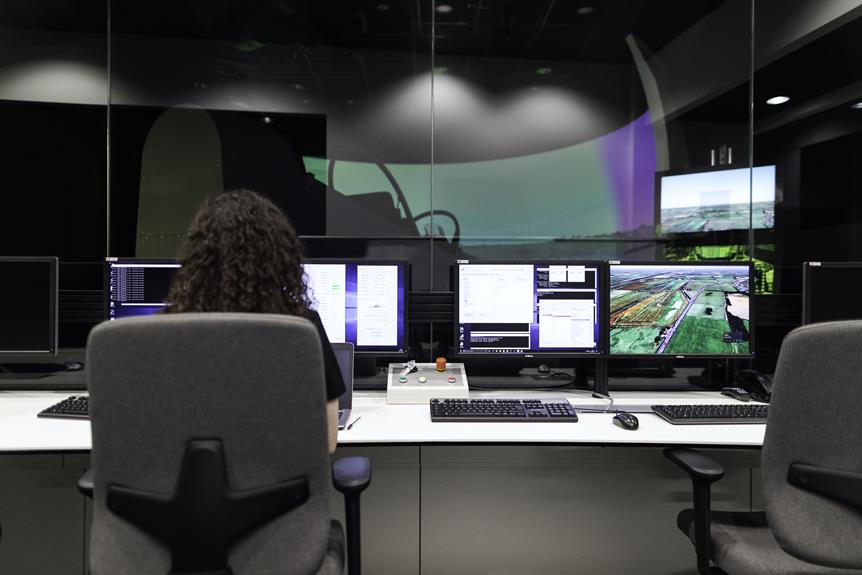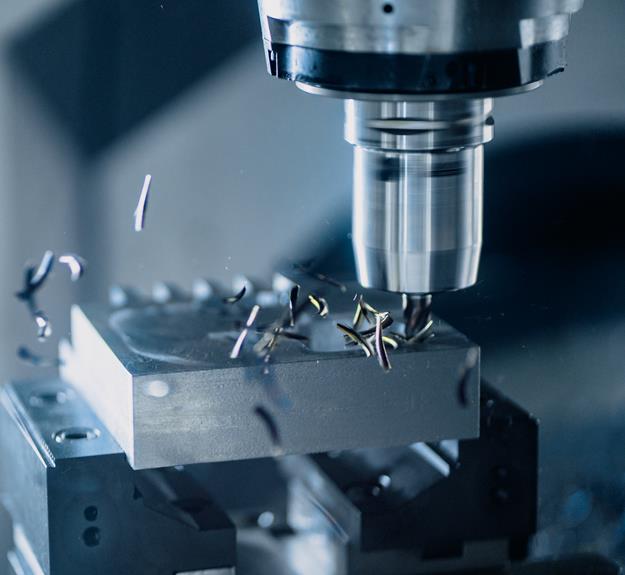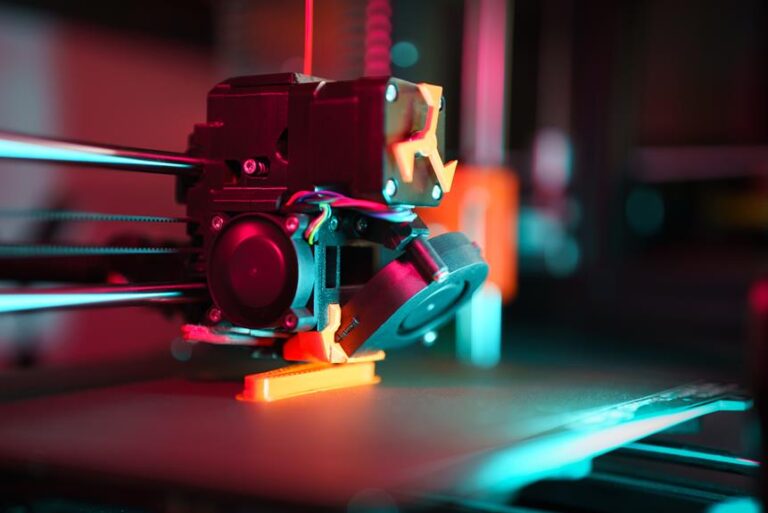Simulation Software for 3D Printing: Optimize Designs With Virtual Testing
In the world of 3D printing, the quest for optimal designs and efficient production is constant. Enter simulation software, a powerful tool that allows designers to test and optimize their creations before they are physically printed.
Imagine being able to identify and address potential issues, ensuring a successful print every time. This article explores the benefits of simulation software for 3D printing, highlighting its ability to enhance design accuracy, improve print quality, and achieve functional performance.
Key Takeaways
- Simulation software optimizes designs and ensures functionality through virtual testing.
- Virtual testing reduces the risk of costly errors during physical manufacturing.
- Virtual testing saves time and costs by identifying issues early in the design phase.
- Simulation software allows for design optimization for specific objectives.
The Importance of Simulation Software in 3D Printing
With the rapid advancements in 3D printing technology, simulation software has become increasingly vital in optimizing designs and ensuring their functionality through virtual testing. Design analysis plays a crucial role in the success of any 3D printing project, as it allows engineers and designers to identify potential flaws and make necessary improvements before physically manufacturing the object.
Simulation software offers a powerful toolset for conducting design analysis, enabling users to simulate and evaluate the performance of their designs in a virtual environment. One of the key advantages of using simulation software in 3D printing is the ability to identify potential issues early in the design process. By virtually testing the design, engineers can detect any structural weaknesses, material limitations, or other factors that could impact the final product's functionality. This allows for iterative design improvements and reduces the risk of costly errors during physical manufacturing.
Moreover, simulation software enables designers to optimize designs for specific objectives, such as weight reduction, performance enhancement, or cost reduction. By simulating different scenarios and analyzing the results, designers can make informed decisions about design modifications to achieve the desired outcomes.
In addition to design analysis, simulation software also allows for the simulation of the entire 3D printing process. This includes simulating the deposition of material, the heating and cooling processes, and the interaction between layers. By simulating the printing process, engineers can anticipate potential issues, such as warping, distortion, or poor adhesion, and make necessary adjustments to ensure successful printing.
Virtual Testing: A Key Step in Design Optimization for 3D Printing
Virtual testing plays a crucial role in the design optimization process for 3D printing. It offers significant benefits to manufacturers and designers by simulating and analyzing the behavior of a design in a virtual environment. This allows for the identification of potential issues and the optimization of the design before physical production.
By utilizing virtual testing, design accuracy is enhanced, as potential problems can be addressed and resolved early on. This reduces the number of physical prototypes required, saving both time and costs in the 3D printing process. Additionally, virtual testing enables designers to explore different design iterations and variations more quickly and efficiently, leading to improved overall design quality.
Benefits of Virtual Testing
Implementing virtual testing in the design optimization process for 3D printing offers numerous advantages.
Virtual testing tools allow engineers to simulate and analyze the performance of their designs before physical production, resulting in significant cost and time savings. By using these tools, designers can identify potential issues and make necessary modifications early in the design phase, reducing the need for expensive and time-consuming physical prototypes.
Virtual testing also enables designers to optimize their designs for specific materials, manufacturing processes, and structural requirements, ensuring optimal performance and reliability.
Furthermore, virtual testing provides valuable insights into the behavior of complex geometries and intricate structures that would be difficult to analyze through traditional testing methods.
Enhancing Design Accuracy
During the design optimization process for 3D printing, virtual testing plays a crucial role in enhancing design accuracy. By simulating the printing process and analyzing the behavior of the design, virtual testing allows for a comprehensive evaluation of the design's performance before it is physically printed. This not only saves time and resources but also ensures that the final product meets the desired specifications.
Here are four ways in which virtual testing enhances design accuracy:
- Identifying potential design flaws and weaknesses.
- Optimizing support structures for better printability.
- Analyzing material behavior and deformation during printing.
- Validating the design's functionality and performance.
By leveraging the power of simulation software, designers can refine their designs and achieve greater accuracy in the final printed product.
This transition into the subsequent section will explore how simulation software enhances print success in 3D printing.
How Simulation Software Enhances Print Success in 3D Printing
One key way simulation software enhances print success in 3D printing is by significantly reducing the occurrence of printing errors. By simulating the printing process before it actually takes place, engineers and designers can identify and address potential issues that may arise during the printing process. Simulation software allows users to detect problems such as warping, distortion, or weak structural integrity, which can lead to failed prints or subpar results.
Through virtual testing, simulation software provides insights into the behavior of the material and the printer, allowing users to optimize print settings, adjust design parameters, and select suitable materials for the specific requirements of the object being printed. It enables designers to anticipate and rectify issues related to support structures, cooling strategies, and part orientation, ensuring that the final print meets the desired specifications.
Furthermore, simulation software aids in the identification of potential bottlenecks or limitations in the printing process, allowing for adjustments to be made to optimize efficiency and reduce production time.
Optimizing 3D Printing Designs With Advanced Analysis Tools
To optimize 3D printing designs, advanced analysis tools offer enhanced design accuracy, time and cost savings, and improved product performance.
These tools enable designers and engineers to analyze and simulate various aspects of the design, such as structural integrity, material behavior, and thermal performance.
Enhanced Design Accuracy
Utilizing advanced analysis tools allows for improved design accuracy in 3D printing, ensuring the creation of high-quality prototypes and end-use parts. With enhanced design accuracy, designers can achieve greater precision and detail in their 3D printed objects, resulting in more functional and aesthetically pleasing outcomes.
Here are four ways in which advanced analysis tools contribute to enhanced design accuracy in 3D printing:
- Error detection and correction: Advanced analysis tools can identify potential design flaws or errors before printing, allowing designers to make necessary adjustments and avoid costly mistakes.
- Material optimization: By analyzing the behavior of different materials during the printing process, advanced analysis tools enable designers to optimize material selection, ensuring the best combination of strength, durability, and other desired properties.
- Structural integrity assessment: Through virtual testing and simulations, advanced analysis tools can evaluate the structural integrity of a design, identifying weak points or areas that may require reinforcement.
- Performance optimization: By simulating real-world conditions and analyzing the performance of a 3D printed object, advanced analysis tools help designers optimize their designs for specific applications, ensuring optimal functionality and performance.
Time and Cost Savings
How can advanced analysis tools for 3D printing designs contribute to significant time and cost savings?
By utilizing these tools, designers and engineers can optimize their designs and identify potential issues before physically printing the object. This allows for the identification and resolution of any problems or inefficiencies early in the design process, reducing the need for costly and time-consuming iterations.
Additionally, advanced analysis tools can simulate the printing process itself, providing insights into the required printing time and material usage, enabling designers to optimize and streamline their designs for efficiency. By accurately predicting how a design will behave during the printing process, these tools can help minimize waste, reduce production time, and ultimately lead to significant time and cost savings in 3D printing projects.
Improved Product Performance
By incorporating advanced analysis tools into the design process, engineers can optimize 3D printing designs and enhance product performance. These tools provide valuable insights into the behavior of the product, allowing engineers to identify potential issues and make necessary adjustments before the physical manufacturing process begins.
Here are four ways in which advanced analysis tools can improve product performance in 3D printing:
- Structural optimization: Analyzing the stress distribution within the design helps engineers identify weak points and optimize the structure for improved strength and performance.
- Material selection: By simulating different materials and their properties, engineers can choose the most suitable material for the specific requirements of the product, ensuring optimal performance.
- Design iteration: Virtual testing allows for quick and cost-effective iteration of designs, enabling engineers to explore multiple design alternatives and choose the best one for improved performance.
- Performance validation: Advanced analysis tools enable engineers to accurately predict the performance of the product under different conditions, ensuring that it meets the desired specifications.
By leveraging these advanced analysis tools, engineers can optimize 3D printing designs and achieve enhanced product performance.
Now, let's explore the benefits of virtual testing in 3D printing.
Exploring the Benefits of Virtual Testing in 3D Printing
One of the key advantages of virtual testing in 3D printing is the ability to optimize designs before physical production. Virtual testing allows designers and engineers to simulate the printing process and evaluate the performance of their designs without the need for physical prototypes. This enables them to identify potential issues and make necessary adjustments to achieve the desired outcome.
By using simulation software, designers can analyze various aspects of the printing process, such as material behavior, structural integrity, and thermal properties. They can simulate different scenarios and evaluate the impact of design modifications on the final product. This level of analysis provides valuable insights into the performance of the design and helps in identifying areas that need improvement.
Additionally, virtual testing allows for the exploration of different design options without incurring the costs associated with physical prototyping. Designers can easily iterate through multiple design iterations and evaluate their performance virtually. This not only saves time and money but also enables designers to push the boundaries of innovation by testing unconventional designs that may not have been feasible otherwise.
Achieving Functional Performance Through Simulation Software
To achieve functional performance in 3D printing, designers and engineers can leverage simulation software to optimize designs and ensure their viability in real-world applications. By using simulation software, they can analyze and predict how a 3D printed object will behave under various conditions, allowing them to make informed design decisions. Here are four key ways in which simulation software can help achieve functional performance:
- Improved Structural Integrity: Simulation software can simulate the stresses and strains that a 3D printed object will experience, enabling designers to identify weak points and optimize the design for better structural integrity.
- Enhanced Material Selection: With simulation software, designers can test different material properties virtually, allowing them to select the most suitable materials for specific applications. This ensures that the 3D printed object will perform as intended in real-world scenarios.
- Reduced Manufacturing Costs: By simulating the printing process, designers can optimize print settings, such as infill density and support structures, to reduce material waste and printing time, resulting in lower manufacturing costs.
- Accelerated Iterative Design: Simulation software enables designers to quickly iterate and test multiple design variations virtually, reducing the need for physical prototypes and accelerating the overall design process.
By utilizing simulation software, designers and engineers can achieve functional performance in 3D printing, ensuring that their designs meet the desired specifications and perform optimally in real-world applications.
Transitioning into the next section, let's explore how virtual testing can further maximize efficiency in 3D printing.
Maximizing Efficiency With Virtual Testing in 3D Printing
Through virtual testing in 3D printing, designers and engineers can maximize efficiency by identifying and resolving potential issues before physical production begins. This process allows for the optimization of designs and the reduction of errors, saving time and resources in the production phase.
Virtual testing involves the use of simulation software that creates a virtual environment to replicate the physical behavior of the printed object. By subjecting the virtual model to various tests and simulations, designers can evaluate its performance and identify any weaknesses or potential problems.
One of the key advantages of virtual testing is the ability to iterate and refine designs quickly. Designers can make adjustments to the virtual model based on the simulation results, allowing them to optimize the design parameters before committing to physical production. This iterative process can significantly reduce the number of design iterations required, leading to shorter development cycles and faster time to market.
Furthermore, virtual testing enables designers to assess the structural integrity and functionality of the printed object. By subjecting the virtual model to stress tests, designers can ensure that the object can withstand the intended usage conditions. This analysis helps identify potential weak points in the design and allows for modifications to be made to enhance the object's performance and durability.
In addition to structural analysis, virtual testing can also simulate the manufacturing process itself. This allows designers to evaluate the feasibility of the manufacturing process and identify any potential issues that may arise during production. By addressing these issues in the virtual environment, designers can streamline the production process and avoid costly and time-consuming errors during physical production.
Improving Design Accuracy With Simulation Software for 3D Printing
Significantly, simulation software for 3D printing enhances design accuracy by allowing engineers and designers to identify potential design flaws and make necessary adjustments before physical production. This technology revolutionizes the traditional design process, providing a liberating experience for those seeking to optimize their 3D printed designs.
Here are four ways simulation software improves design accuracy and fosters a sense of liberation:
- Reduced material waste: Simulation software enables engineers to accurately predict how a design will behave during the printing process, reducing the risk of failed prints and minimizing material waste.
- Enhanced structural integrity: By simulating the stresses and strains that a 3D printed object will endure, engineers can identify weak points in the design and make improvements to enhance its structural integrity, resulting in more reliable and durable products.
- Improved functionality: Simulation software allows designers to test and optimize the functionality of their designs virtually, ensuring that the final product will meet the desired performance requirements.
- Time and cost savings: By identifying and rectifying design flaws early in the virtual testing phase, simulation software helps to avoid costly and time-consuming iterations in physical production, leading to significant savings in both time and resources.
Simulation software for 3D printing empowers engineers and designers to create accurate and optimized designs, enabling them to push the boundaries of what is possible and liberate their creativity.
Enhancing Print Quality and Performance With Virtual Testing
The use of simulation software for 3D printing enables engineers and designers to enhance the print quality and performance of their designs through virtual testing. By simulating the printing process, these software tools can identify potential issues and optimize the design before it is physically printed.
One of the key benefits of virtual testing is the ability to identify and correct any structural weaknesses or flaws that could compromise the final print quality. The software can analyze the design for factors such as support structures, layer adhesion, and material distribution, ensuring that the printed object meets the desired specifications.
Additionally, virtual testing allows for the optimization of print parameters such as print speed, temperature, and layer thickness, which can significantly impact the final print quality. By fine-tuning these parameters through simulation, engineers and designers can achieve better surface finish, dimensional accuracy, and overall print performance.
Furthermore, simulation software enables the evaluation of different materials and their compatibility with the design, allowing for informed material selection and improved print quality.
Frequently Asked Questions
How Much Does Simulation Software for 3D Printing Typically Cost?
The cost of simulation software for 3D printing varies depending on the specific software and its features. Factors to consider include licensing fees, maintenance costs, and any additional modules or upgrades required.
Are There Any Limitations to What Can Be Simulated With 3D Printing Software?
There are limitations to what can be simulated with 3D printing software. Factors such as material properties, complex geometries, and certain manufacturing processes may pose challenges in accurately simulating and optimizing designs.
What Types of Analysis Tools Are Commonly Used in Simulation Software for 3D Printing?
Commonly used analysis tools in simulation software for 3D printing include structural analysis, thermal analysis, and fluid flow analysis. These tools enable engineers to optimize designs by analyzing factors such as stress distribution, heat transfer, and fluid behavior, ensuring the production of high-quality 3D printed objects.
Can Simulation Software Help With Reducing Material Waste in 3D Printing?
Simulation software is an invaluable tool for reducing material waste in 3D printing. By virtually testing designs before printing, it enables optimization, leading to more efficient use of materials and cost savings.
Is Virtual Testing With Simulation Software as Accurate as Physical Testing for 3D Printing Designs?
Virtual testing with simulation software is a highly accurate and efficient method for evaluating 3D printing designs. Its precision and analytical capabilities allow for comprehensive analysis, reducing the need for physical testing and minimizing material waste.
Conclusion
In conclusion, simulation software plays a crucial role in optimizing design and enhancing the success of 3D printing. By utilizing advanced analysis tools and virtual testing, designers can achieve functional performance, maximize efficiency, and improve design accuracy.
One example of the benefits of virtual testing is seen in the case of a medical device company. By simulating the printing process and identifying potential issues beforehand, they were able to produce high-quality, precise medical implants, reducing the risk of errors and improving patient outcomes.









